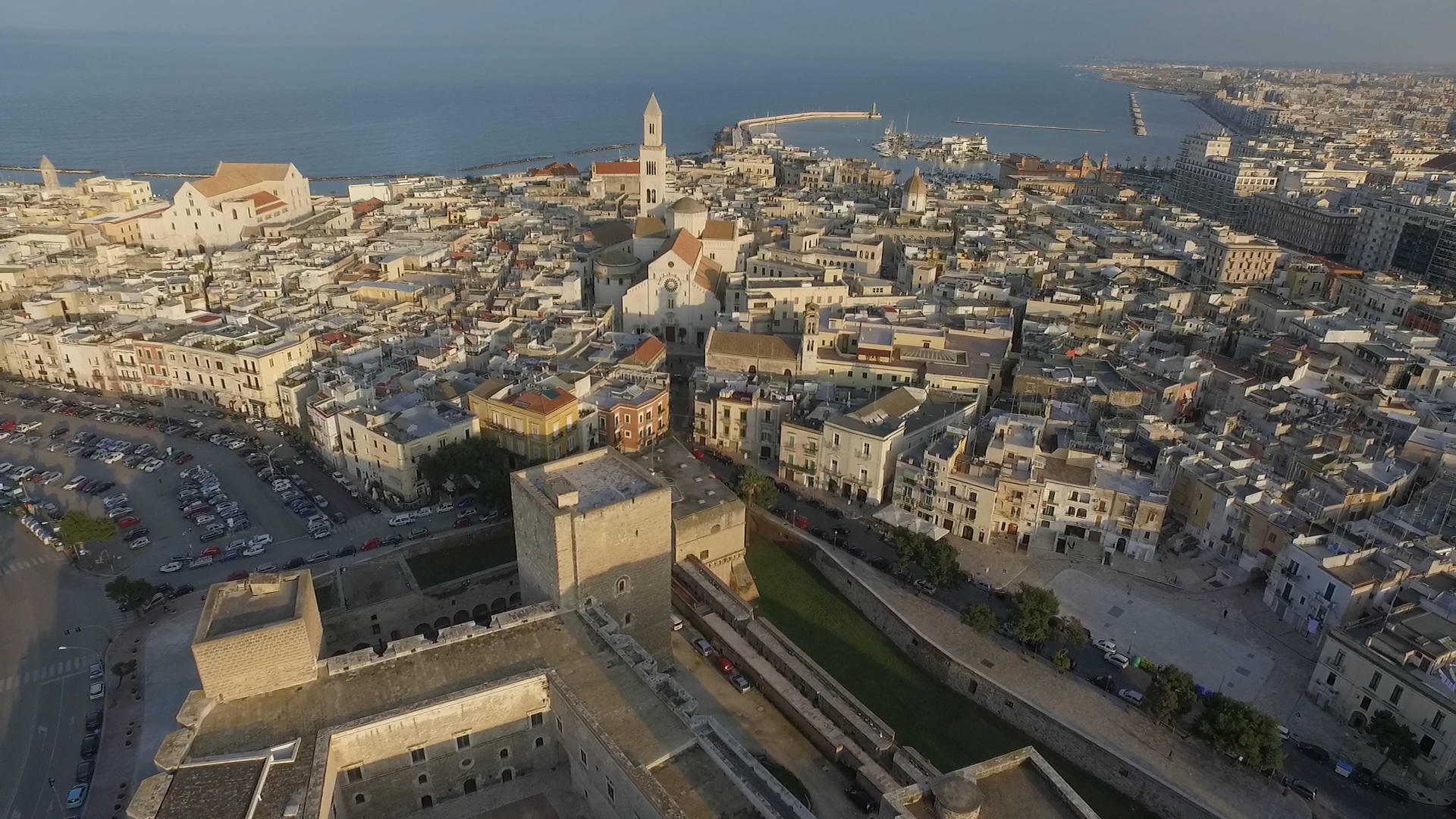The Italian city with two faces: the Murat district and Bari Vecchia
Bari is the capital city of the province of Bari and of the Apulia region in Italy. It is the second most important economic center of mainland Southern Italy after Naples. The city has a population of about 326,799 spread over 117 km2.
Bari is a city of two faces with its elegant Murat district (The “new” town built in the XIX century during the French domination thanks to Gioacchino Murat) and, stretching along the Adriatic Sea, the area of Bari Vecchia (the Historical centre of the city). In these two quarters are present the majority of buildings of historical and cultural importance of the city.
Bari was one of the first Italian cities to join the Covenant of Mayors. It approved the Sustainable Energy Action Plan (SEAP) in 2011, defining strategies to reach the goal of reducing by 35% CO2 emissions in the city by 2020. The implementation of the preliminary identified initiatives should generate a 40% cut of emissions (2030 target). The Municipality of Bari has started within a previous FP7 project an action plan (“Bari Smart City”) with the scope of converting Bari into a smart city.
cover image by: Michele Riglietti
Replication
The Smart City vision and replication plan provides for an all-encompassing approach that will relate and address energy issues, environmental protection, the issue of climate change and ecological transition, as well as economic development which are issues to be addressed on a metropolitan and regional basis in connection with spatial planning of the environment. The municipality of Bari aims to prepare a Metropolitan Sustainable Energy and Climate Action Plan (SECAP) that looks at the planned development of the entire metropolitan city, its priorities and strategic objectives.
The municipality is already carrying out renovation projects in some areas in the city, by replacing old street lights with LED smart traffic lights and increasing the number of EV charging points in different locations of the city. It is also evaluating other projects and initiatives to involve and expand the number of local citizens participating in events related to green transition. It is also promoting the use of EV shared bicycles, zero-emissions public transport e-buses and other transports methods to decrease the level of GHG emissions in the city. Finally, it is evaluating new ways to improve the existing paradigms currently in use in the city regarding waste collection and management.
The experiences and lessons learned thanks to POCITYF will enrich and enlarge the projects already in progress in the city, and will even used to improve and expand the plans by applying new technologies acknowledged in the project and implementing them in other areas of the Municipality.
The Replication Plan consists in hypothesizing a strategy of supply, use of energy, introduction of renewable energy sources and measures to reduce energy consumption and increase energy efficiency in the entire local community. It will also be included in the Municipal SECAP Bari is aiming to propose, thanks to its potential for innovation and ability to adapt and replicate in other contexts.
Find Bari’s Replication Plan here.
Key figures
117 km²
Area326.799
Population2nd c. B.C.
OriginsContact the Bari Team

Luigi Ranieri
luigi.ranieri@comune.bari.it
